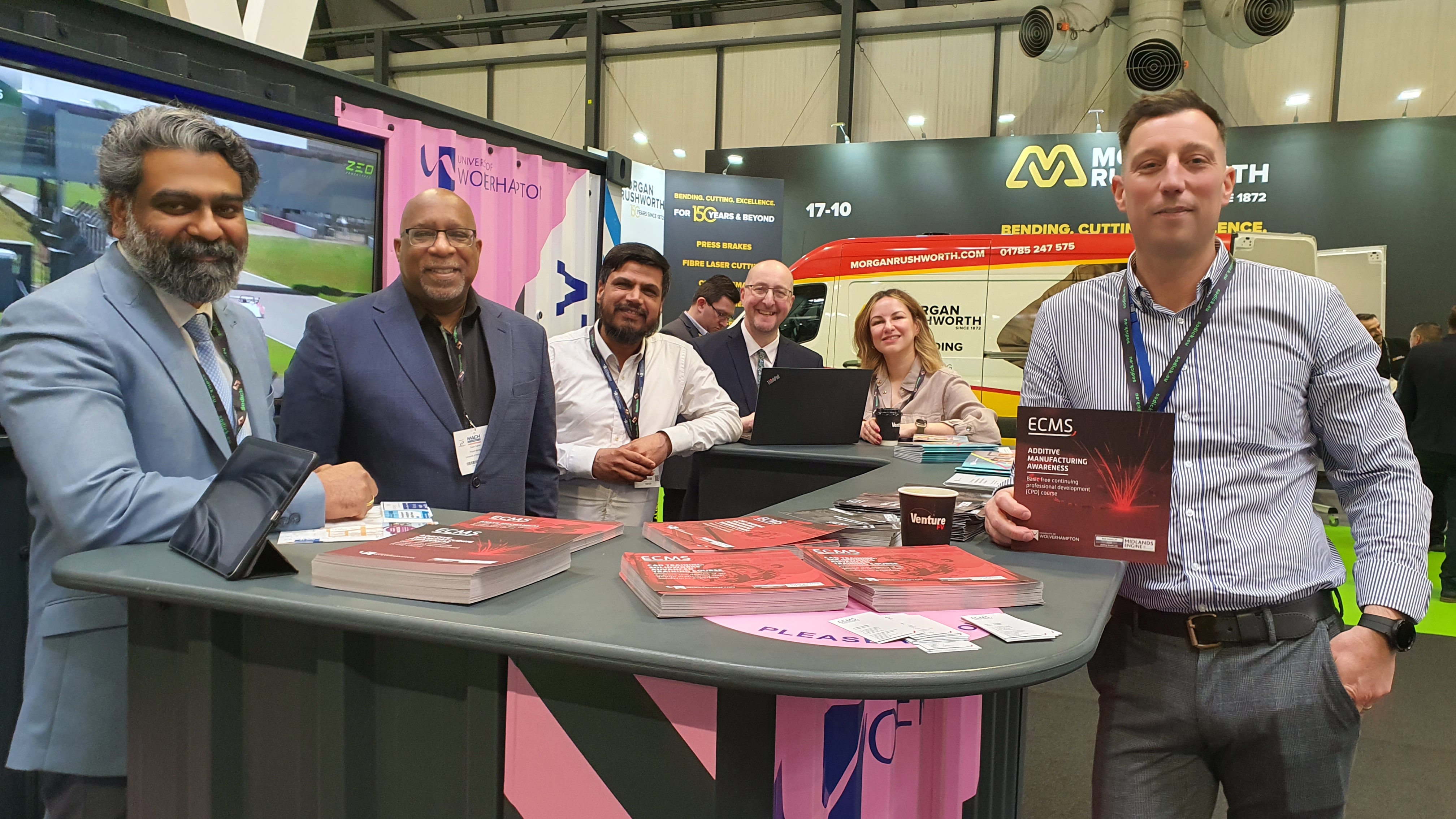
NATO award for University academic

Lecturer in Aerospace Engineering Dr Adriano Cerminara has been awarded a NATO AVT Panel Excellence Award as part of a project relating to hypersonic vehicles.
The AVT-240 NATO team in ‘hypersonic boundary-layer transition prediction’ focussed on the study of hypersonic flows with the aim to predict where turbulent flow occurs on the surface of hypersonic vehicles.
Hypersonic vehicles fly faster than five times the speed of sound (greater than Mach 5). It’s hoped they will enable a new class of flying transportation that allows faster access to space, rapid military response at long range, and faster means of commercial air travel.
An important element of the research of hypersonic and supersonic vehicles is aerodynamic heating; looking at how the air flow interacts with the vehicle’s surface as this can trigger turbulence, resulting in excessive heating, with temperatures greater than 1,000˚Celsius, which can lead to the dangerous situation of the surface melting.
Dr Cerminara said: “The work of the AVT-240 team was aimed at improving the understanding of the physics associated with hypersonic flows, as well as the development of methodologies for the accurate prediction of the location where the flow over the vehicle’s surface will transition from laminar to turbulent flow.
“Laminar flow is characterised by air particles moving over the surface in a parallel, structured and consistent fashion. On the contrary, turbulent flow is characterised by randomisation, vortical structures and recirculation, and leads to an increase in temperature which is undesirable. We therefore want to prevent transition from occurring.
“The change in flow is created by instabilities which can be caused by several different reasons and mechanisms. One, which may be intuitive, is a change in the surface geometry which disrupts the parallel laminar flow.
“With the speeds of hypersonic vehicles, heating caused by turbulent flow can be above a thousand of degrees Celsius and can lead to the vehicle’s surface melting.
“We need to identify what the instabilities are, where they originate and how they grow, in order to identify the transition points. To produce reliable computer models for transition prediction, we’re going to have to identify all of the possible instability modes as well as in-depth understanding of the physical mechanism behind their origin and growth. It will also need to consider different vehicle geometries, flow regions, velocities and flow conditions.
“This is a really big challenge.”
Dr Cerminara’s sub-group was working on a certain vehicle geometry, representative of a forebody model developed by MBDA, while other groups worked on different geometries.
They were working on comparing experimental results produced on a probe representative to their vehicle geometry in the Mach 6 hypersonic wind tunnel at Purdue University in Indiana, United States, to those created by computer numerical simulations at the University of Southampton.
Another important challenge is represented by the computational cost of such simulations. These numerical simulations were run in parallel over thousands of processors in the UK’s supercomputing facility ARCHER with computational time provided by the UK Turbulence Consortium (UKTC).
Dr Cerminara added: “With the combination of the wind tunnel and numerical simulations, we wanted to identify the transition process occurring on the vehicle’s geometry under study.
“The numerical results successfully agreed with the results produced in the wind tunnel. This therefore made it possible to look more in depth at the physical mechanism involved, and we were able to assess the characteristics of the principal disturbances within the wind tunnel, as well as to capture the associated instabilities over the surface, including the region where they originate and grow leading to transition.”
On being given the NATO AVT Panel Excellence Award, Dr Cerminara added: “It’s very positive news to have been identified for this award.
“It represents a very important achievement and recognition of our hard work. I’m honoured.
“This achievement is source of further motivation and energy for continuing to contribute to the advancement of the aerospace science.”
The sub-task research team, which Dr Cerminara coordinated, delivered a chapter in the final NATO report, as well as a publication in the Journal of Spacecraft and Rockets.
For more information please contact the Corporate Communications Team.


/prod01/wlvacuk/media/departments/digital-content-and-communications/images-2024/240328-Varsity-Line-Up-Resized.jpg)
/prod01/wlvacuk/media/departments/digital-content-and-communications/images-18-19/220325-Engineers_teach_thumbail.jpg)
/prod01/wlvacuk/media/departments/digital-content-and-communications/images-2024/240423-Additive-Research-Centre-Launched.jpg)
/prod01/wlvacuk/media/departments/digital-content-and-communications/images-2024/240320-Uzbekistan-Resized.jpg)
/prod01/wlvacuk/media/departments/digital-content-and-communications/images-2024/240229-The-Link-Resized.jpg)
/prod01/wlvacuk/media/departments/digital-content-and-communications/images-2024/240416-Abi-Dare-Resized.jpg)

